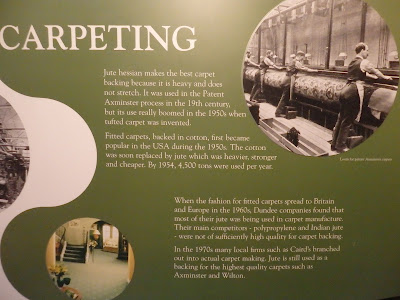| According to Wikipedia, "Retting is a process employing the action of micro-organisms and moisture on plants to dissolve or rot away much of the cellular tissues and petins surrounding bast-fibre bundles, and so facilitating separation of the fibre from the stem. The most widely practised method of retting, called water retting, is performed by submerging bundles of stalks in water. The water, penetrating to the central stalk portion, swells the inner cells, bursting the outermost layer, thus increasing absorption of both moisture and decay-producing bacteria. Retting time must be carefully judged; under-retting makes separation difficult, and over-retting weakens the fibre. In double retting, a gentle process producing excellent fibre, the stalks are removed from the water before retting is completed, dried for several months, then retted again" |





























































No comments:
Post a Comment